My Path to Perfect Photo Culling
Updated: October 15, 2025 Author: Vitaly
TIn this article, I will tell you what is culling and why it is so important for effective post-processing of photographs. I will share my own method of culling, as well as my experience of using AI tools to automate the process.
Culling is probably the most unloved and time-consuming part of working with photographs that everyone who loves photography faces. And it doesn’t matter whether you are a professional photographer or just an amateur, the process remains the same, only the goals of culling are different. Professionals cull according to the requirements or wishes of the client, and amateurs - for themselves and to free up space on the storage device, because it is not unlimited.
The problem with choosing photos is that there is no creative process. Instead of thinking about light, composition and emotion, I cursed myself for taking 20 identical photos and trying to decide which one was the “best.”
But while constantly working with photos, I realized one simple thing: rejection is not a punishment, but a foundation on which all subsequent photo processing is built. High-quality sorting does not just remove defects, it frees you from unnecessary work, from the need to store terabytes of unnecessary files and gives you more time for creativity. The main thing is to establish a process and perform all actions consistently. When I changed the approach, processing began to take several times less time, and the final result was pleasing to the eye.
In addition, modern AI allows you to automate most of the work on sorting photos. Especially when it comes to technical aspects. However, as practice has shown, you should not trust the algorithm 100%. I hope that my personal experience will help you find the ideal path to quickly and effectively sorting photos.
Stages of photo rejection
The ability to reject photos comes with experience. The main problem is that there is no universal approach or tool. If you watch videos of photographers on YouTube, everyone uses their own approach that seems comfortable to them.
At first, I tried to do everything at once: I looked at each photo, assessed its artistic value and technical quality simultaneously. This was a terrible mistake. The brain quickly got tired, and in the end, I just saved everything “just in case”. Then I realized that the process should be step-by-step.
To simplify the process of culling photos, I use Tonfotos. Why not Adobe Lightroom or other popular paid software? First of all, the price. I am not a professional photographer for whom photos are a means of earning money. Therefore, I have no desire to buy a subscription to software that I will use once a month to cull photos taken with a camera or phone. In addition, for me, the functionality of Adobe Lightroom is excessive.
In turn, Tonfotos is free, works not only on Windows or macOS, but also on Linux distributions. And the built-in algorithms for identifying and recognizing faces work no worse than Lightroom.
Primary import
Since I don't transfer photos from my phone or camera to my computer every day, it turns out that a certain number of photos with different dates accumulate on the device. Accordingly, for ease of selection, it would be great if all files were placed in folders whose names correspond to the shooting date. Fortunately, Tonfotos has this feature, and it works automatically, immediately after connecting the device.
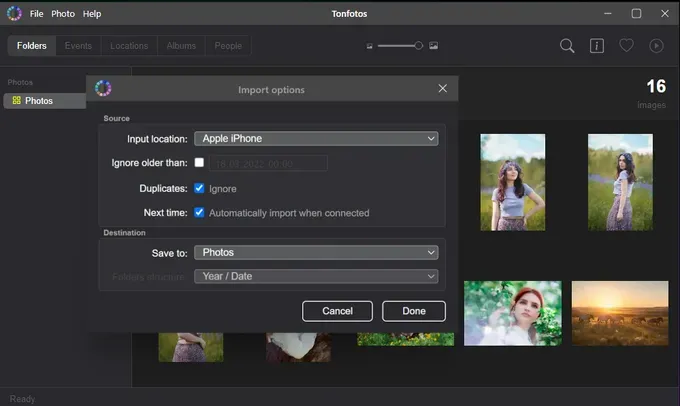
I would like to point out that I always leave the “ignore duplicates” box checked to avoid accidentally losing a valuable photo.
Once the import is complete, a folder with the year appears in the Tonfotos structure, inside which there are subdirectories corresponding to a specific date.
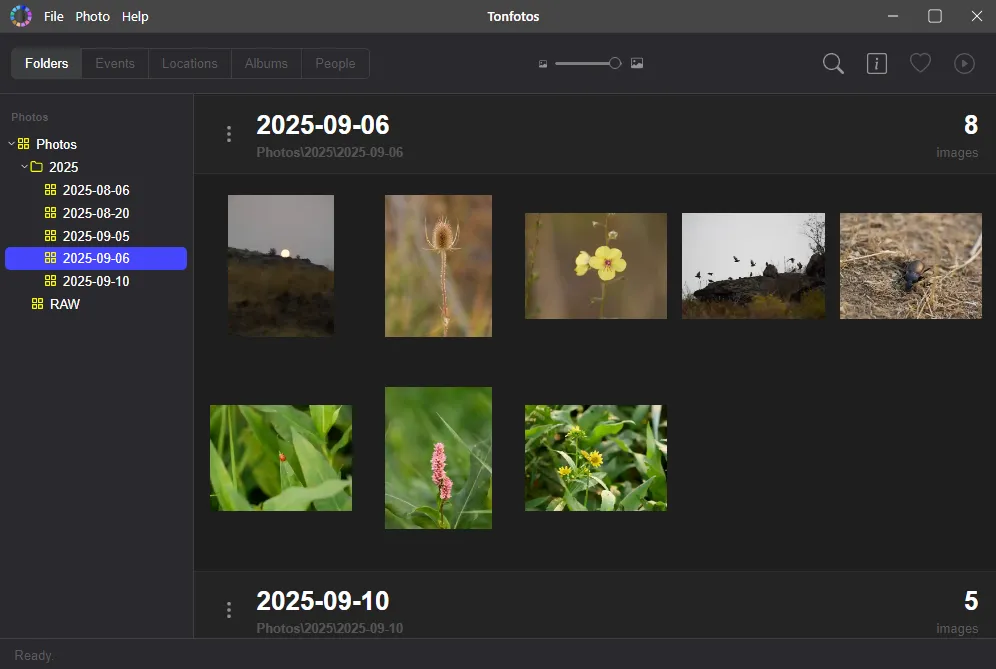
As you can see, even without viewing, I got a well-structured basis for subsequent rejection of photographs.
Filtering of defects
This is the quickest and most technical stage. I go through all the photos quickly, without stopping at each one. My goal is to remove obvious defects. What is it? Blurry photos, photos with eyes closed, incorrect exposure (complete overexposure or failure in the shadows), unwanted elements in the frame. I don’t waste a second thinking about “can this be fixed?”
If I need to filter photos from a specific time period, I simply right-click on it in Tonfotos and create a filter for that catalog.
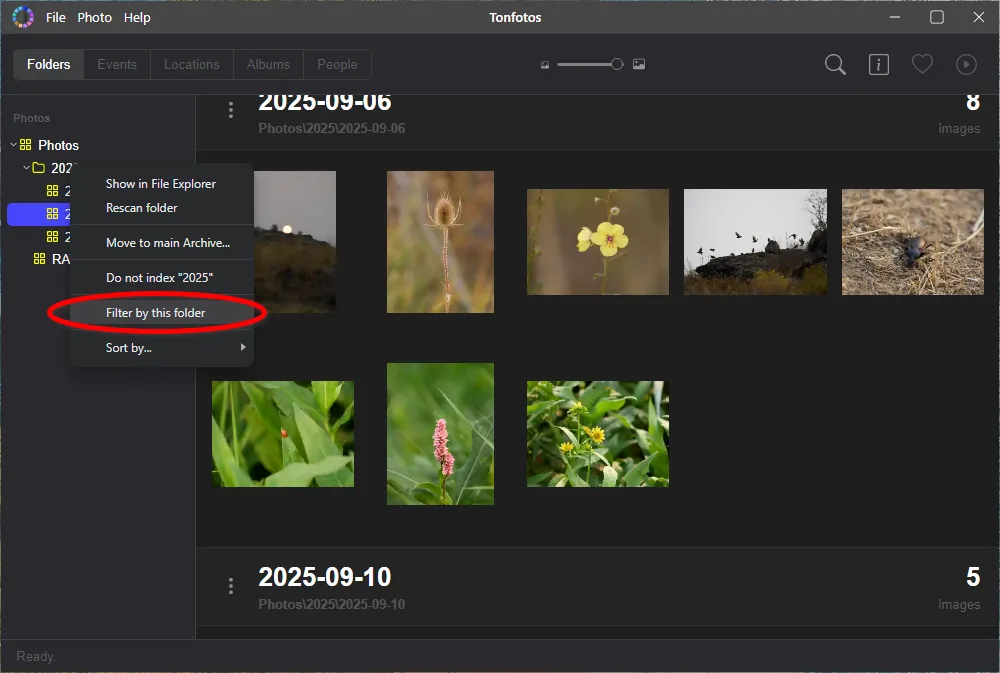
As a result, I receive instantly sorted images for subsequent culling.
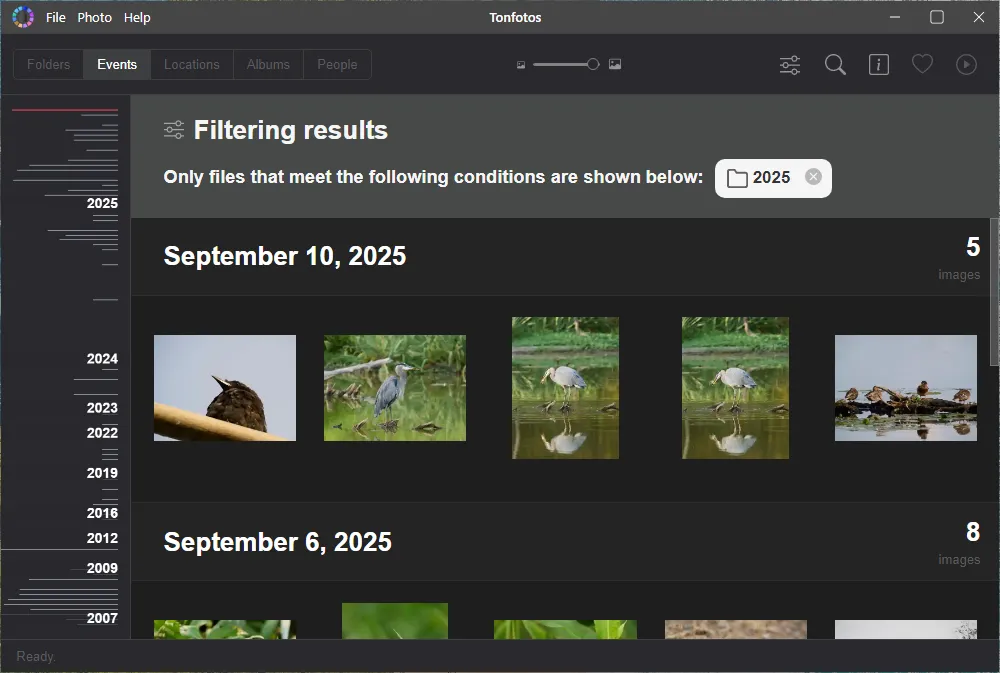
When I have only the necessary photos in front of me, I open each one and delete those that are defective. I do not pay attention to the overall composition, but only to the presence of blurs in the photos, duplicates, shots with closed eyes or undesirable facial expressions. The main task of this stage is to filter out obviously unsuitable material.
I highlight the best photos
After all the technical defects have been weeded out, I begin a more thoughtful review. At this stage, I look for the best shots, which I add to the Album of Favorites. I pay attention to the composition, emotions, the story that the photo tells.
The advantage of working in Tonfotos is that Favorites or other albums within the program are virtual, so adding photos to them does not move the file itself on the computer's hard drive. To mark the best photos, simply click on the "Heart".
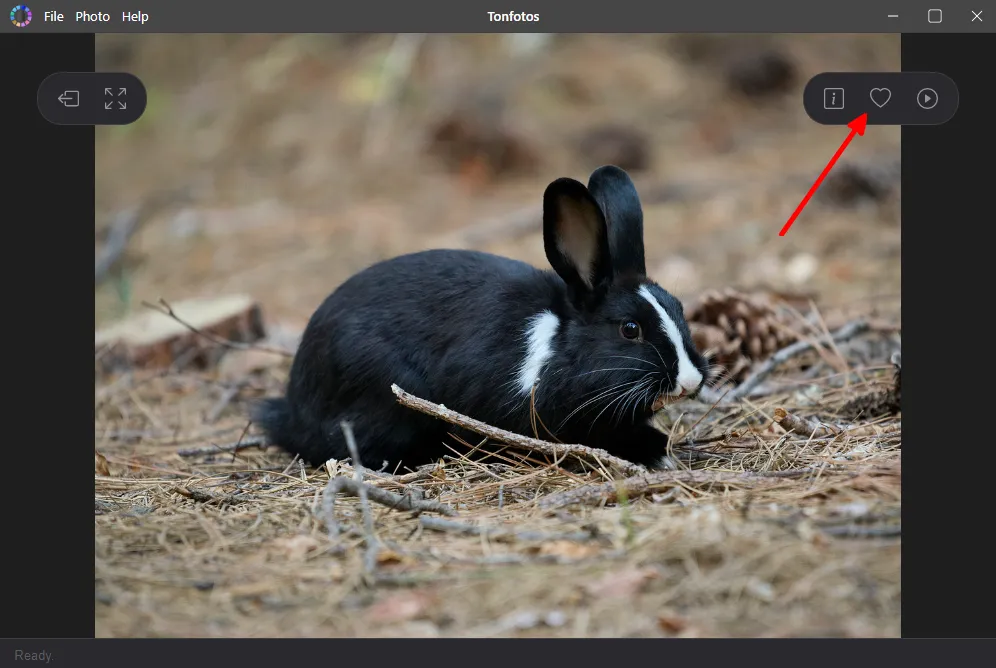
To avoid accidental deletion, I export the selected photos to a separate folder by selecting all the photos in Favorites and calling the command through the context menu.
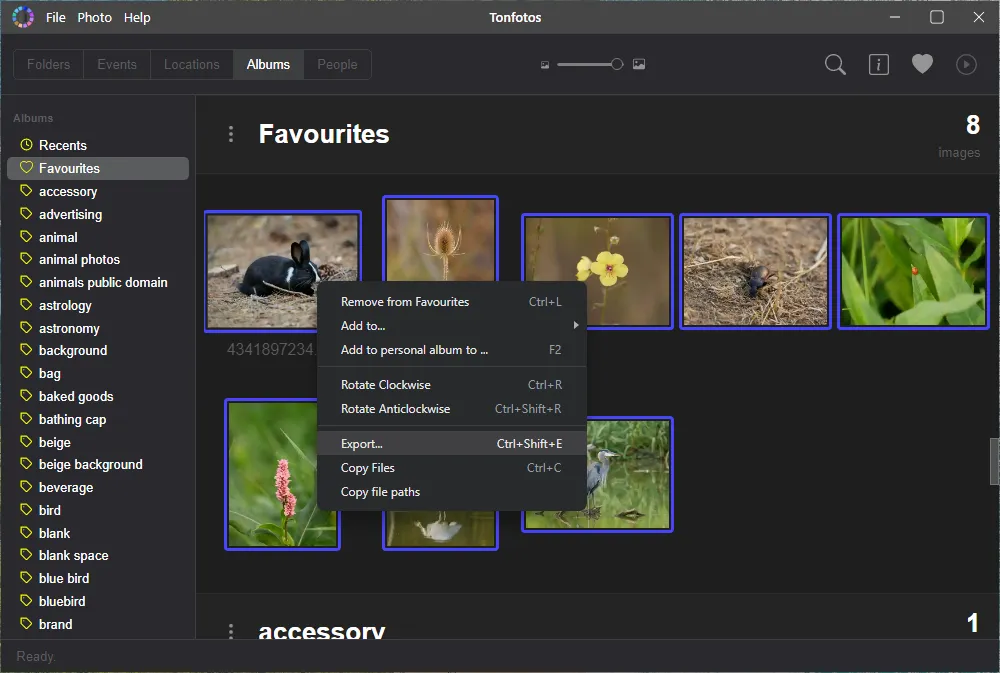
And only after I have made my final selection, I delete all the photos that are not included in the Favorites catalog. This is critical to maintaining order and freeing up disk space.
From manual routine to AI assistant
For a long time I used the manual method exclusively. Programs like Tonfotos offer a great set of tools for culling photos. With their help you can set up a very flexible process, but it was always purely manual work. It required full concentration and took a huge amount of time.
And then I learned about AI-powered photo culling tools. At first, I was skeptical. How could a machine pick the “best” shot? But I decided to give it a try and realized that AI isn’t trying to be an artist. It’s great at routine, technical tasks. AI services can analyze thousands of photos in seconds, find and delete blurry shots, shots with closed eyes, duplicates. In fact, they do all the work I used to do in the first stage of culling.
Aftershoot
The main advantage of this AI assistant for rejecting photos is that it works locally, on your computer. This is convenient not only from the point of view of privacy, but also mobility. For example, when I am in the field and there is no way to connect my laptop to the Internet.
However, despite running locally, Aftershoot can analyze thousands of frames in minutes, filtering out defects and grouping duplicates. It learns from your style and preferences, making the app even more accurate over time.
Despite the enormous amount of work that Aftershoot does, the interface and use of the program itself is simple and intuitive. You just need to add a catalog of photos, specify the degree of automation and start the culling process.
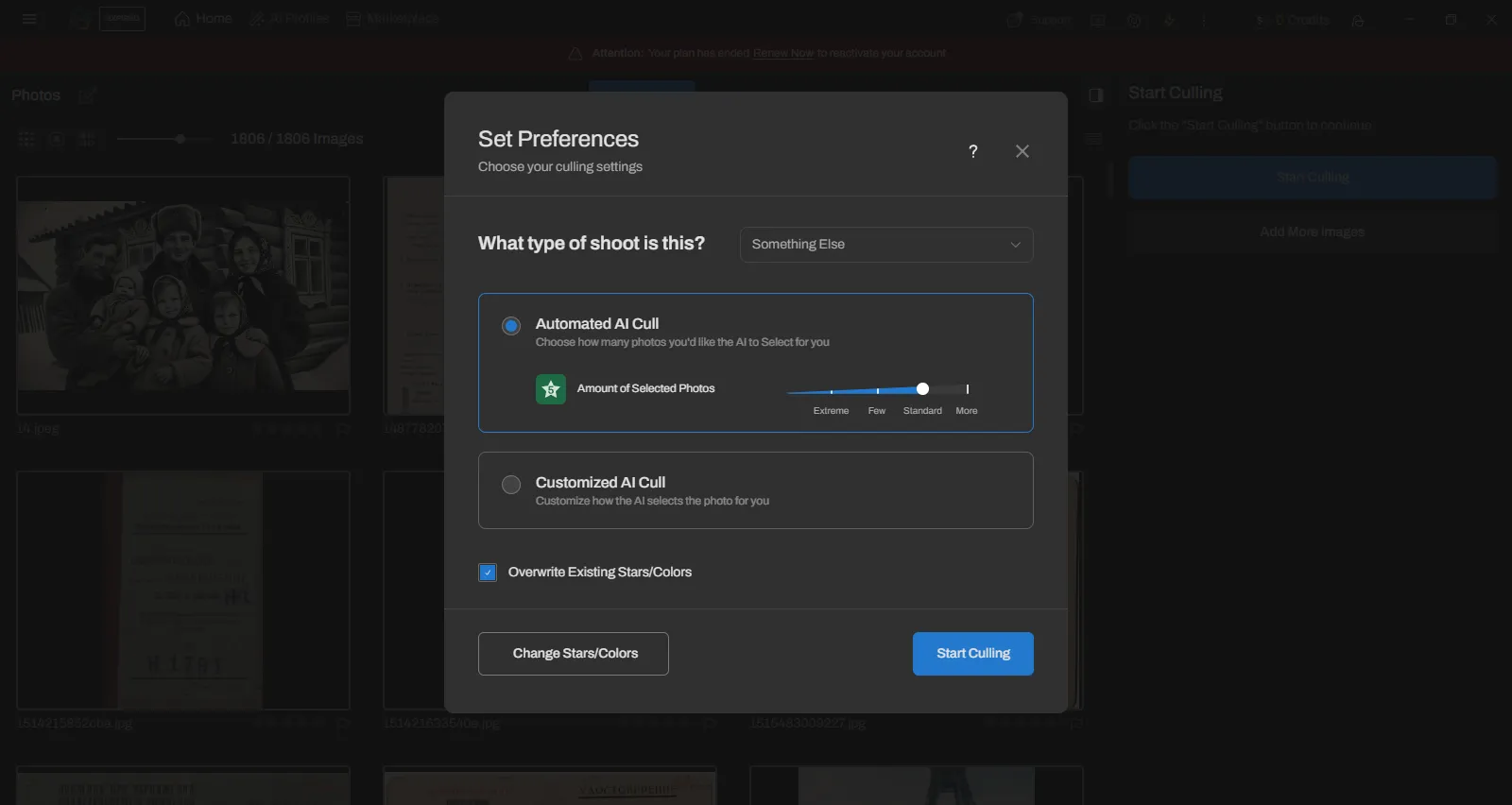
To help the algorithm cope with the task better, you can specify the type of photos. Cataloging includes: landscape, portrait, wedding and other categories. You can manually configure the algorithm, which will ultimately become the basis for training the AI model.
Once processing is complete, Aftershoot assigns each photo a corresponding rating, based on which I can then decide for myself what to keep and what to delete.
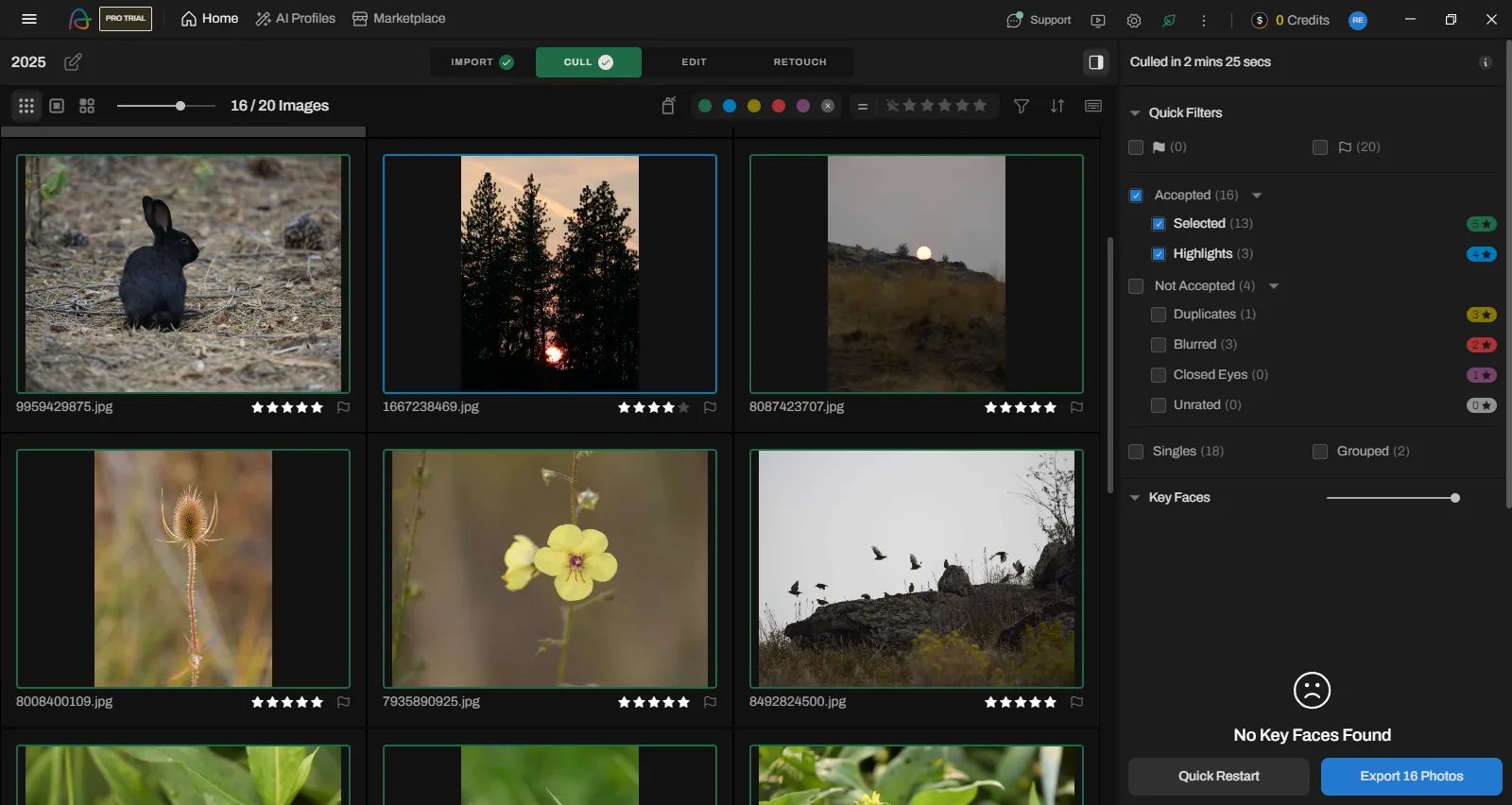
The selected images can be exported directly to a separate folder for further processing or use the editing tool built into the program. I prefer to use third-party solutions, which I am more accustomed to, but you can use the Aftershoot editor with AI tools.
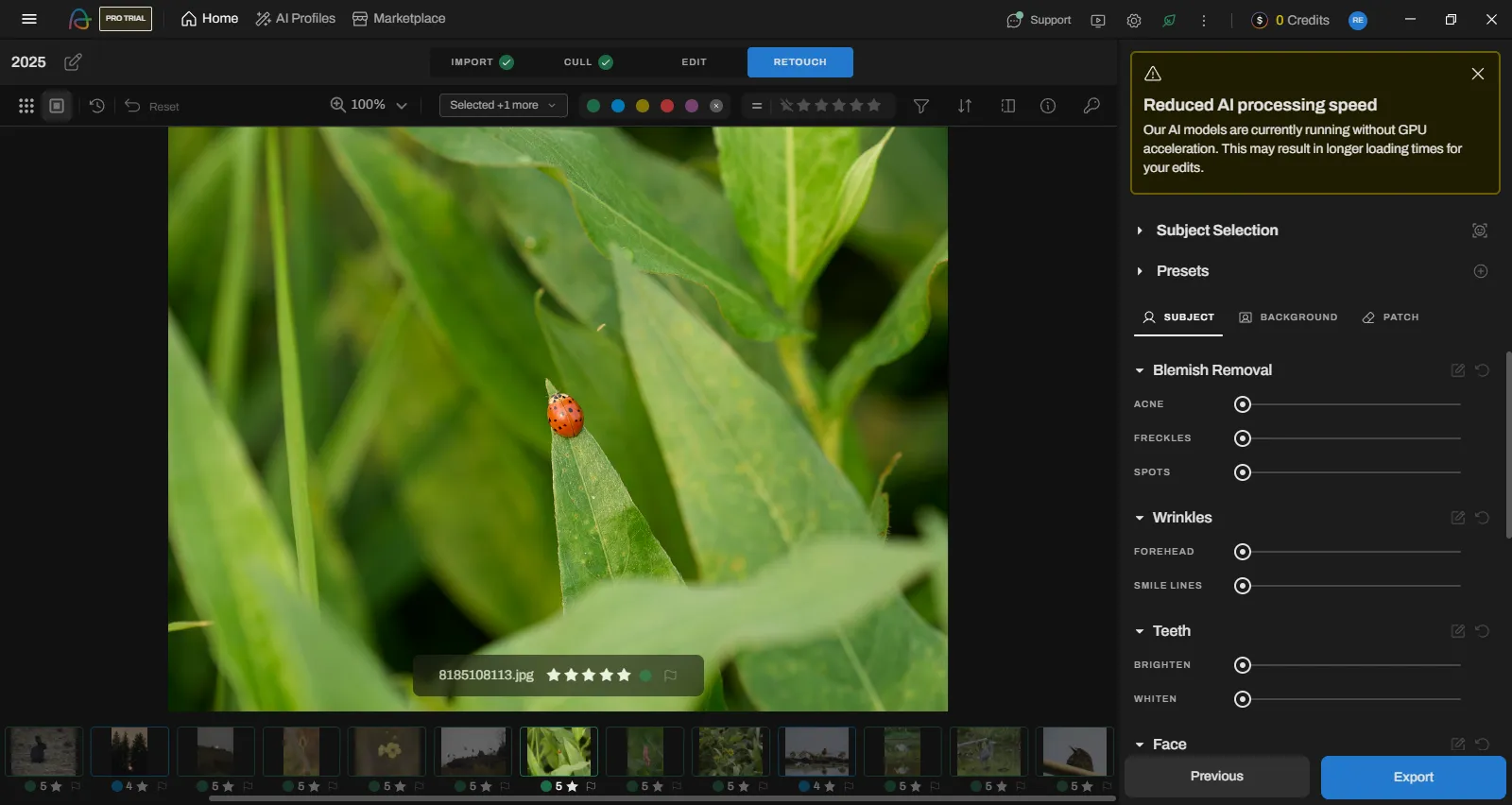
The application saves time, removes routine and allows you to focus on creativity. Thanks to local work, flexible settings and a built-in editor, the program covers several tasks of a photographer at once - from primary sorting to export and basic editing.
Image AI
Unlike Aftershoot, Imagen AI is a cloud-based solution. It also does a great job of culling, but all the calculations happen in the cloud, without loading your computer. The service can recognize faces and even detect kisses, which is very convenient for wedding photographers.
However, I found Imagen AI less intuitive. In addition, the culling process itself took longer than Aftershoot. This may be due to the quality of the Internet connection, since the entire photo selection process is carried out in the cloud.
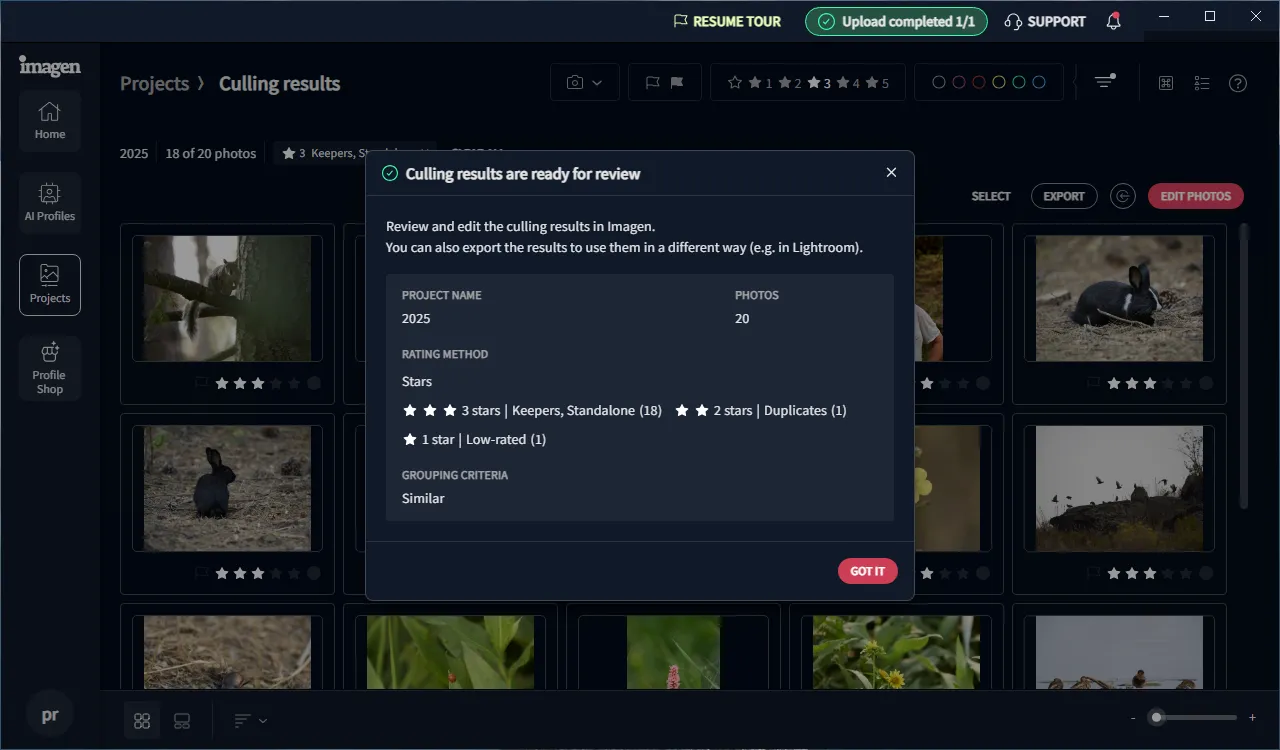
One of the service's strengths is its grading system. Each frame is assigned a certain quality level, which helps navigate a large array of photos more quickly. Photos can receive high, medium, and low ratings, as well as additional tags like "closed eyes" or "kiss." This structure allows you to filter out obvious defects and immediately highlight key frames that are likely to make it into the final selection.
Imagen AI captivates with its functionality and the accuracy of recognizing details that are often important in reportage and wedding photography. But the cloud nature of the service makes it dependent on Internet speed, and the interface does not always seem clear. For those willing to put up with these limitations, Imagen AI can be a powerful tool, especially when working with large collections.
FilterPixel
After experimenting with Aftershoot and Imagen AI, I found FilterPixel. What makes this service unique is that it offers not only selection but also basic photo editing.
Like Imagen AI, FilterPixel is a cloud-based solution designed for photographers working with large numbers of photos featuring people: weddings, portraits, and special event photos. The service is characterized by its high speed. Its AI-powered auto-selection feature can analyze thousands of frames in minutes, instantly identifying technical flaws, closed eyes, blur, and duplicates.
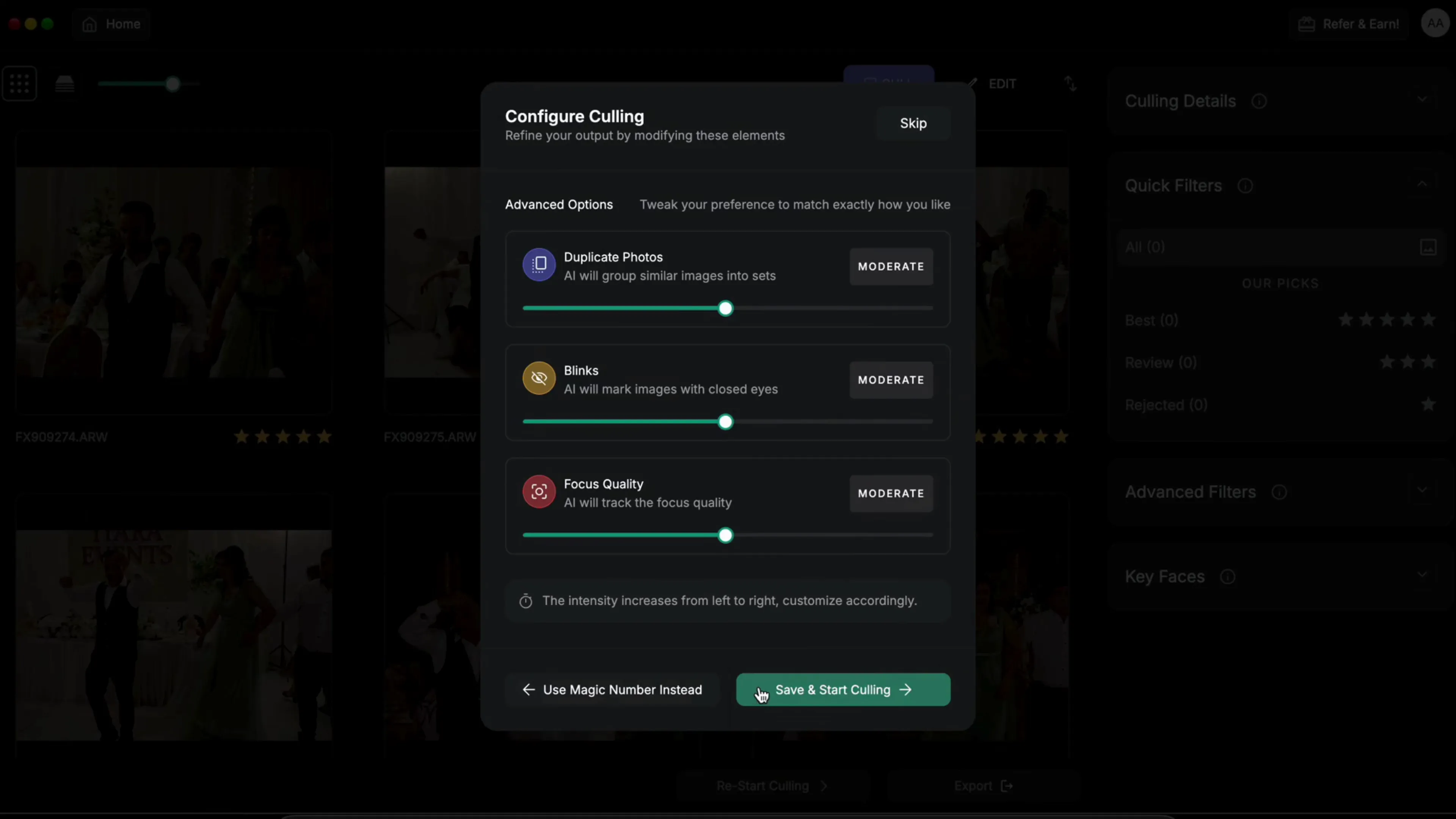
What I particularly liked about FilterPixel was its integrated approach. It not only selects the best photos but also immediately offers AI editing. After selection, you can use Custom AI Profiles, which are trained on your individual editing style. This allows you to apply basic color correction and stylization directly during the selection process before exporting the files to a professional photo editor.
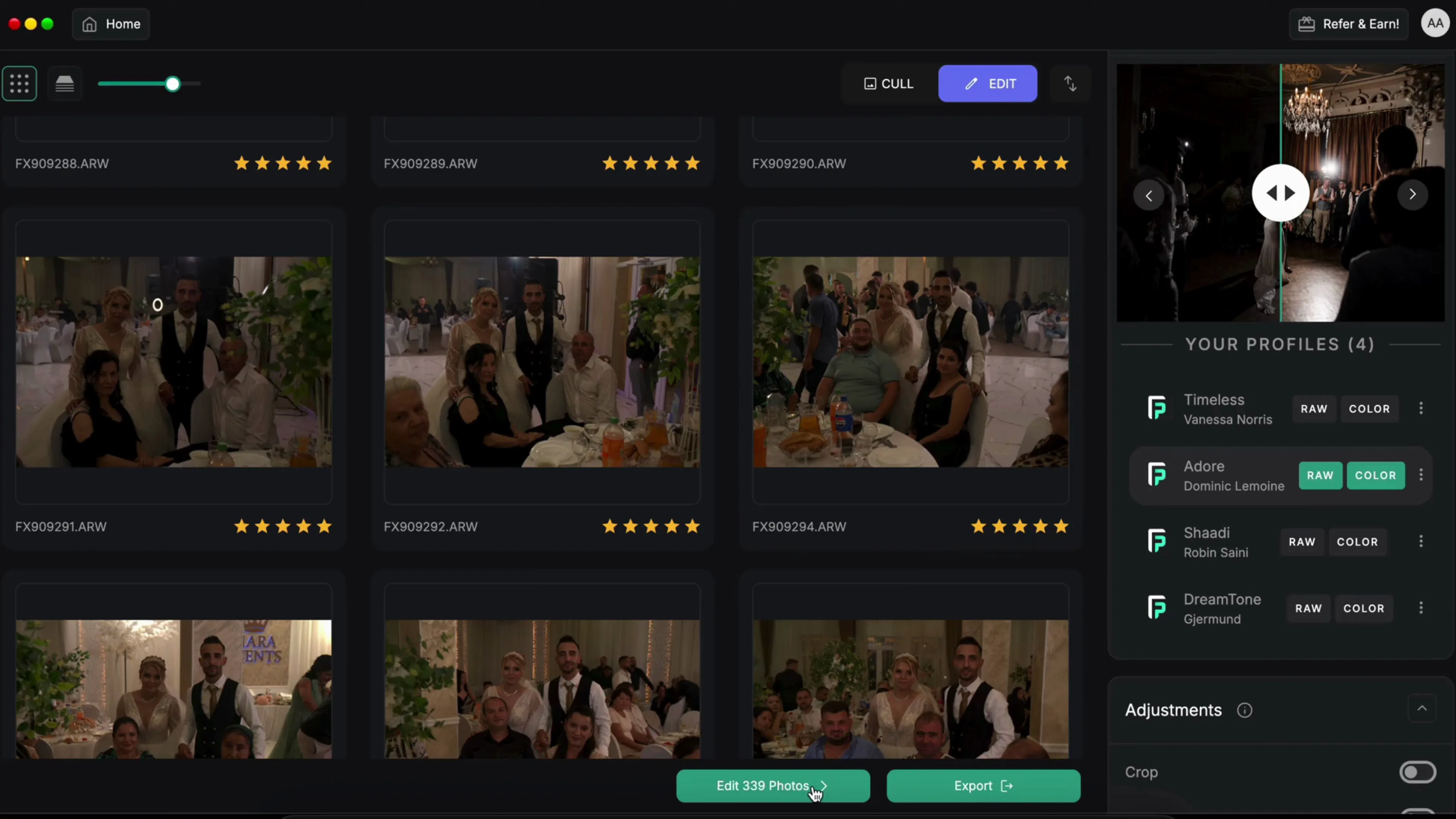
I find FilterPixel's interface very intuitive. The additional Face View feature allows you to quickly check focus and facial expressions without manually zooming in on each frame, significantly simplifying the process of culling through 1,000+ photos.
Overall, FilterPixel is ideal for those who want maximum speed and are willing to rely on AI for not only culling but also primary processing, thereby reducing the time spent in Lightroom and other similar applications.
My optimal compromise in photo culling
After much experimentation, I found my ideal workflow that combines the best of both worlds: the speed of AI and complete creative control of a human.
- Initial upload and AI analysis. I upload all the photos from the memory card to one of the AI services, for example, Aftershoot.
- Automatic "dirty" selection". The AI service spends several minutes (sometimes even seconds) making the first pass: it cuts off all blurry photos, removes duplicates, and removes shots with closed eyes.
- Final creative choice. After that, I import the filtered and AI-ranked shots into Tonfotos. Here, I no longer waste time fighting technical defects, but only deal with the creative side: I scroll through the sorted series and choose the most expressive shots for the final selection.
- Processing and exporting. Then I send the selected frames to RawTherapee or darktable for final color correction.
This hybrid approach is the most effective. I no longer waste time on boring, routine work and can fully focus on creativity. Tonfotos' face recognition and detection feature allows you to instantly create collections of photos with a specific person.
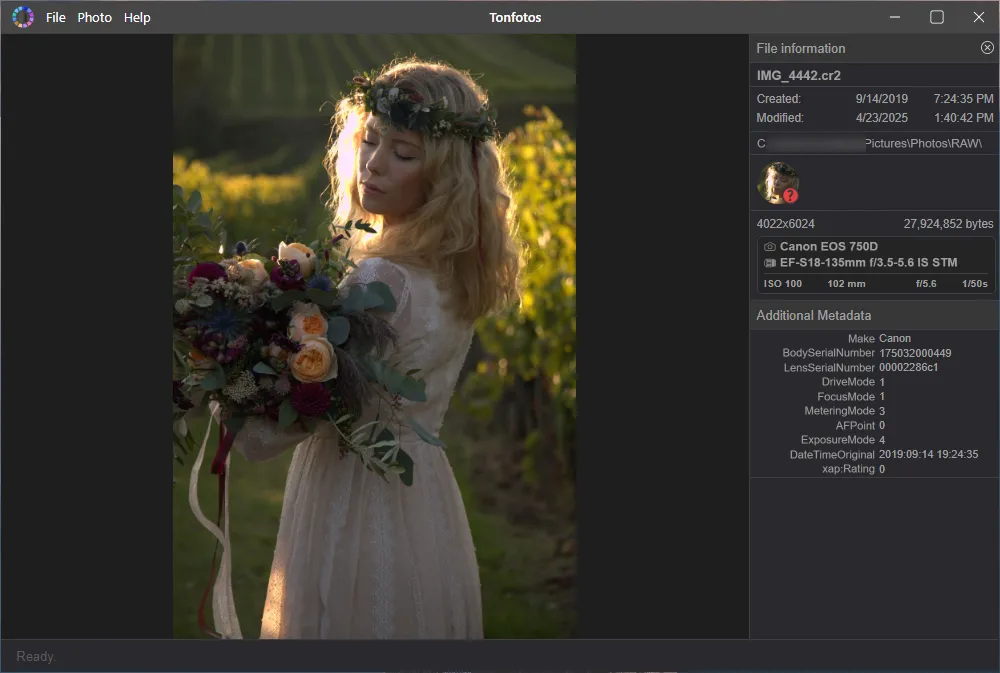
Time for creativity
Culling is not just sorting, but a strategic step that directly affects your productivity and the quality of your work. Thanks to modern technology, we can save hours that used to be spent on routine tasks. I recommend trying a hybrid approach: using the speed and accuracy of AI for technical tasks and reserving the right to make the final, creative choice. It is not a replacement for the photographer, but an intelligent assistant that allows us, creative people, to do what we love most - create.